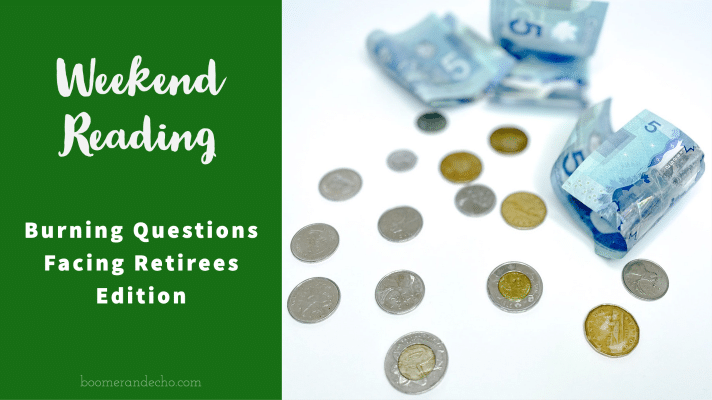Canadians who take their CPP at age 60 instead of 70 “can expect to lose over $100,000 of secure lifetime income, in today’s dollars, over the course of their retirement,” according to Dr. Bonnie-Jeanne MacDonald in research released by the National Institute on Ageing (NIA) and the FP Canada Research Foundation.
However, those who retire before 70 need savings to tide them over until their larger CPP pensions start if they want to live at least as well in their 60s as they do later in retirement. Here we look at the amount of savings required by a retired 60-year old to be able to delay CPP and OAS pensions.
Incentive for delaying is strong
We’re used to thinking of CPP and OAS pensions as just a few hundred dollars per month, but a 70-year old couple just starting to receive maximum CPP and OAS pensions (but not any of the new expanded CPP) would get $61,100 per year, rising with inflation for the rest of their lives. If the same couple were 65 they’d only get $43,700 per year. If this 65-year old couple had taken CPP at 60, their combined CPP and OAS would be $32,700 per year now. The incentive for delaying the start of CPP and OAS is strong.
We can think of the savings needed to delay the start of CPP and OAS pensions as the price of buying larger inflation-indexed government pensions. This price is an absolute bargain compared to the cost of buying an annuity from an insurance company. Those in good health but worried about “losing” if they delay pensions and die young can focus on the positives. Delaying pensions allows retirees to spend their savings confidently during their 60s knowing that their old age is secure. Taking small pensions early can leave retirees penny-pinching in their 60s worried about their savings running out in old age.
The table below shows the amount of savings a retired 60-year old requires to delay starting CPP. This table is based on a number of assumptions:
- The current maximum age 65 CPP pension is $1203.75 per month. Before you take your CPP pension, it grows based on national wage growth as well as an actuarial formula, but after you take it, it grows with “regular” inflation, the Consumer Price Index (CPI). We assume wage growth will exceed CPI growth by 0.75% per year.
- We assume the retiree is entitled to the maximum CPP pension. Those with smaller CPP entitlements can scale down the savings amounts. For example, someone expecting only 50% of the maximum CPP pension can cut the savings amounts in half.
- We assume the retiree holds savings in an RRSP/RRIF so that withdrawals will be taxed in the same way that CPP pensions are taxed. Retirees using savings in non-registered accounts won’t need to save as much because they only need to match the after-tax amount of CPP pensions.
- The retiree is able to earn enough on savings to keep up with inflation. (Online banks offer savings account rates that put the big banks to shame.) The monthly pension amounts in the table are inflation-adjusted; the retiree’s savings will grow to cover the actual CPP pension payments.
- We assume the retiree doesn’t have a workplace pension whose bridge benefits end at age 65. This bridge benefit replaces some of the savings needed to permit delaying CPP and OAS.
| CPP | % of | Inflation-Adjusted | Months of | Savings |
|---|---|---|---|---|
| Start | Age 65 CPP | Monthly CPP | Spending from | Needed at |
| Age | Pension | Pension | Personal Savings | Age 60 |
| 60 | 64.0% | $770 | 0 | 0 |
| 61 | 71.2% | $863 | 12 | $10,400 |
| 62 | 78.4% | $958 | 24 | $23,000 |
| 63 | 85.6% | $1054 | 36 | $37,900 |
| 64 | 92.8% | $1151 | 48 | $55,200 |
| 65 | 100.0% | $1250 | 60 | $75,000 |
| 66 | 108.4% | $1365 | 72 | $98,300 |
| 67 | 116.8% | $1481 | 84 | $124,400 |
| 68 | 125.2% | $1600 | 96 | $153,600 |
| 69 | 133.6% | $1720 | 108 | $185,800 |
| 70 | 142.0% | $1842 | 120 | $221,000 |
You can’t start OAS till 65 but can delay it till 70
Unlike CPP, you can’t start your OAS pension until you’re at least 65. But you can delay it until you’re 70 to get larger payments. The table below shows the amount of savings a retired 60-year old requires to delay starting OAS. The table is based on a number of assumptions:
- The current maximum age 65 OAS pension is $615.37 per month.
- We assume the retiree is entitled to the maximum OAS pension by living in Canada for at least 40 out of 47 years from age 18 to 65.
- We assume the retiree won’t want to live poor before age 65, which means spending from savings from age 60 to 64 to make up for not receiving OAS.
- We assume the retiree holds savings in an RRSP/RRIF so that withdrawals will be taxed in the same way that OAS pensions are taxed. Retirees using savings in non-registered accounts won’t need to save as much because they only need to match the after-tax amount of OAS pensions. Continue Reading…






